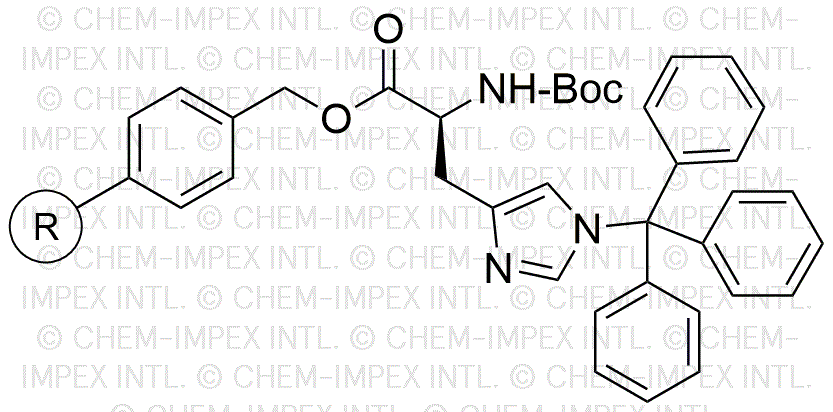Na-Boc-Nim-trityl-L-histidine Merrifield resin is widely utilized in research focused on:
- Peptide Synthesis: This resin serves as a solid support for the synthesis of peptides through solid-phase methods, allowing for efficient assembly of complex peptide chains.
- Drug Development: It plays a crucial role in the development of peptide-based therapeutics, enabling researchers to create novel compounds for various medical applications.
- Bioconjugation: The resin can be used to attach peptides to other biomolecules, facilitating the creation of targeted drug delivery systems and diagnostic agents.
- Protein Engineering: Researchers utilize this resin to modify histidine residues in proteins, enhancing their stability and functionality for industrial or therapeutic purposes.
- Research in Catalysis: It is also explored in the field of catalysis, where modified peptides can act as catalysts in various chemical reactions, providing a greener alternative to traditional methods.
General Information
Properties
Safety and Regulations
Applications
Na-Boc-Nim-trityl-L-histidine Merrifield resin is widely utilized in research focused on:
- Peptide Synthesis: This resin serves as a solid support for the synthesis of peptides through solid-phase methods, allowing for efficient assembly of complex peptide chains.
- Drug Development: It plays a crucial role in the development of peptide-based therapeutics, enabling researchers to create novel compounds for various medical applications.
- Bioconjugation: The resin can be used to attach peptides to other biomolecules, facilitating the creation of targeted drug delivery systems and diagnostic agents.
- Protein Engineering: Researchers utilize this resin to modify histidine residues in proteins, enhancing their stability and functionality for industrial or therapeutic purposes.
- Research in Catalysis: It is also explored in the field of catalysis, where modified peptides can act as catalysts in various chemical reactions, providing a greener alternative to traditional methods.
Documents
Safety Data Sheets (SDS)
The SDS provides comprehensive safety information on handling, storage, and disposal of the product.
Product Specification (PS)
The PS provides a comprehensive breakdown of the product’s properties, including chemical composition, physical state, purity, and storage requirements. It also details acceptable quality ranges and the product's intended applications.
Certificates of Analysis (COA)
Search for Certificates of Analysis (COA) by entering the products Lot Number. Lot and Batch Numbers can be found on a product’s label following the words ‘Lot’ or ‘Batch’.
Número de catálogo
Número de lote/lote
Certificates Of Origin (COO)
This COO confirms the country where the product was manufactured, and also details the materials and components used in it and whether it is derived from natural, synthetic, or other specific sources. This certificate may be required for customs, trade, and regulatory compliance.
Número de catálogo
Número de lote/lote
Safety Data Sheets (SDS)
The SDS provides comprehensive safety information on handling, storage, and disposal of the product.
DownloadProduct Specification (PS)
The PS provides a comprehensive breakdown of the product’s properties, including chemical composition, physical state, purity, and storage requirements. It also details acceptable quality ranges and the product's intended applications.
DownloadCertificates of Analysis (COA)
Search for Certificates of Analysis (COA) by entering the products Lot Number. Lot and Batch Numbers can be found on a product’s label following the words ‘Lot’ or ‘Batch’.
Número de catálogo
Número de lote/lote
Certificates Of Origin (COO)
This COO confirms the country where the product was manufactured, and also details the materials and components used in it and whether it is derived from natural, synthetic, or other specific sources. This certificate may be required for customs, trade, and regulatory compliance.


